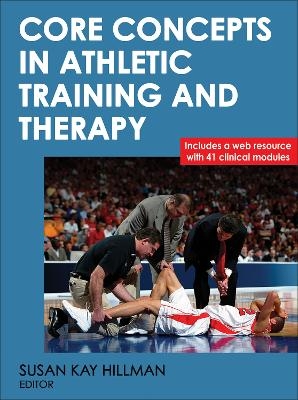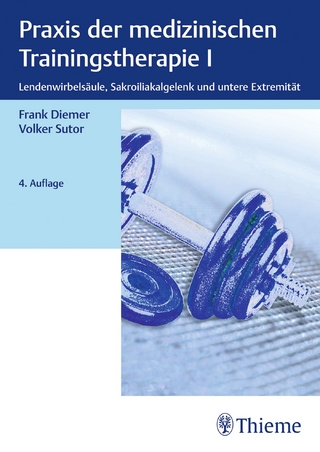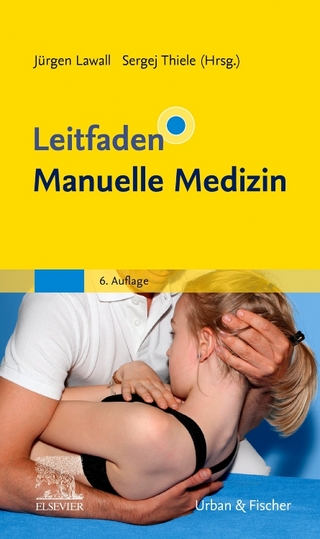
Core Concepts in Athletic Training and Therapy
Human Kinetics (Verlag)
978-0-7360-8285-3 (ISBN)
- Titel ist leider vergriffen;
keine Neuauflage - Artikel merken
Core Concepts in Athletic Training and Therapy provides a balanced introduction to the knowledge, skills, and clinical abilities that span the profession of athletic training. Students in athletic training, coaching, or other health care fields will find current information covering the breadth of theory and application of athletic training, including evidence-based practice, prevention and health promotion, clinical examination and diagnosis, acute and emergency care, therapeutic interventions, and health care administration. It also presents advanced topics of pathophysiology and psychological response to sport injury to better prepare students for continued study.
Compared to other introductory athletic training texts, Core Concepts in Athletic Training and Therapy is the only text that aligns with the newest athletic training education competencies from the National Athletic Trainers’ Association (2011). Written by a team of respected athletic training educators with experience at the professional and collegiate levels, the text breaks new ground by condensing key concepts to a comprehensive level while not overwhelming students with content that will be addressed in depth in advanced courses. Numerous features assist students in learning the fundamentals:
• Each of the six parts opens with a discussion of the competencies that are covered in that part and concludes with a reference list of those competencies by description and number, making it easy to monitor the knowledge required.
• A companion web resource contains 41 clinical proficiency exercises, carefully chosen to complement the introductory level of the text and align with required educational objectives. The modules may be completed online or printed, and cross-references at the end of each chapter guide students to the appropriate modules to apply the chapter content.
• Case studies sprinkled throughout the text demonstrate real-world situations and include critical thinking questions that underscore principles of rehabilitation and exercise.
• Full-color photographs depict specific conditions and techniques, giving students an accurate picture of real practice.
• For instructors, a complete set of ancillaries assists in preparing and presenting lectures, leading class discussion, and planning assignments and assessments.
In addition, Core Concepts in Athletic Training and Therapy is the first text to offer a complete chapter on evidence-based practice, the newest educational competency required of entry-level athletic trainers by the NATA. The rest of the text introduces general information about life as an athletic trainer, such as training, education, licensure, certification, employment opportunities, and the roles in a sports medicine team. The core of the text then focuses on required knowledge and skills related to injury prevention, injury recognition and classification (including region-specific examination strategies, basic objective tests, physical exam strategies, and injury mechanisms), acute care, therapeutic interventions, and the role of pharmaceuticals in the healing process. To round out the text, it addresses health care administration and discusses strategies for the management of athletic training programs.
With learning features and a web resource that integrate clinical learning into an introductory ccourse, Core Concepts in Athletic Training and Therapy is the essential resource for current and future athletic trainers. Long after its first use, it will prove a valuable reference for athletic training students as they progress through the curriculum, prepare for certificiation, and begin careers in the profession.
Core Concepts in Athletic Training and Therapy is part of Human Kinetics' Athletic Training Education Series. Featuring the work of respected authorities in athletic training, this collection of outstanding textbooks, each with its own supporting instructional resources, parallels and expounds on the content areas in the accreditation standards of the NATA Education Council.
Susan Kay Hillman, ATC, PT, is associate professor and director of human anatomy at the Arizona School of Health Sciences, a division of the A.T. Still University. She has more than 13 years of experience as head athletic trainer for the University of Arizona and has served as a consultant, assistant athletic trainer, and physical therapist for the Pittsburgh Steelers as well as the Philadelphia Eagles football clubs. Hillman has served on the editorial board of the journal Athletic Therapy Today (now titled International Journal of Athletic Therapy & Training) and the review board of the Journal of Sport Rehabilitation. She is a past member of the Rocky Mountain Athletic Trainers’ Association (RMATA) Program Committee. She currently serves as a home-study reviewer for the Board of Certification (BOC) and served on the Role Delineation 6 team for the BOC. In 2004, she received the Distinguished Educator Award from the RMATA, and the year before she was named Most Distinguished Athletic Trainer by the National Athletic Trainers' Association (NATA). Hillman earned a master's degree in physical therapy from Stanford University and a master's degree in physical education and athletic training from the University of Arizona as well as a bachelor's degree in the same field from Purdue University.
Introduction to Athletic Training
Susan Kay Hillman, ATC, PT
Becoming an NATA Certified Athletic Trainer
History of Athletic Training
Employment Opportunities in Athletic Training
The Sports Medicine Team
Learning Aids
Part I. Prevention and Health Promotion
Chapter 1. The Preparticipation Physical Examination
Susan Kay Hillman, ATC, PT
Essential Elements of the Preparticipation Physical Examination
Health Status Information
Physical Components of the Preparticipation Physical Examination
Fitness or Performance Testing
Preparticipation Physical Examination Results
Considerations for Athletes With Impairments
Administration of the Preparticipation Physical Examination
Learning Aids
Chapter 2. Fitness Testing and Conditioning
Susan Kay Hillman, ATC, PT
Fitness Testing Procedures
Fitness Testing Parameters
Exercise Prescription
Developing the Strength Training Program
Types of Strength Training
Integrating Cardiorespiratory and Flexibility Parameters
Learning Aids
Chapter 3. Nutritional Aspects of Health and Performance
Susan Kay Hillman, ATC, PT
Why Study Nutrition?
Basic Nutritional Needs of Active Individuals
Fluid Needs for Active Individuals
Caloric Demands of Active Individuals
MyPlate
Planning the Participants’s Diet
Nutritional Concerns in Injury or Illness
Learning Aids
Chapter 4. Environmental Conditions
Susan Kay Hillman, ATC, PT
Temperature Regulation and Heat Exchange
Physiological Responses to Exercise in the Heat
Cooling Mechanisms
Adapting to Environmental Heat
Heat Illness
Prevention of Heat-Related Illness
Caring for Heat Illness
Cold Environments
Other Weather Conditions
Other Environmental Factors Influencing Sport Participation
Learning Aids
Chapter 5. Protective Devices, Regulations, and the Law
Susan Kay Hillman, ATC, PT
Standards for Equipment Design and Reconditioning
Regulating Agencies
Reconditioning and Maintenance of Athletic Headgear
Agencies for Development of Sport Safety Rules
Legal Concerns About Equipment Use in Sport
Liability Negligence
Determination of Liability
Product and Manufacturer Liability
Protecting Oneself From Legal Misfortune
Learning Aids
Chapter 6. Athletic Taping, Padding, and Bracing
David H. Perrin, PhD, ATC, and Kirk Brumels, PhD, AT, ATC
Anatomy and Injury Mechanism as the Foundation for Taping and Bracing
Materials for Taping and Wrapping
Prerequisites to Taping and Bracing
Preparing for Taping
Applying Tape
Padding
Pad Fabrication Considerations
Pad Construction Materials
Role of Bracing
Learning Aids
Part II. Clinical Examination and Diagnosis
Chapter 7. Injury Mechanisms and Classifications
Sandra J. Shultz, PhD, ATC, CSCS, FNATA, and Kirk Brumels, PhD, AT, ATC
Anatomical Reference Terminology
Physical Maturity Classifications
Injury Mechanisms
Injury Classifications
Learning Aids
Chapter 8. Principles of Examination
Sandra J. Shultz, PhD, ATC, CSCS, FNATA. and Kirk Brumels, PhD, AT, ATC
Examination Components
On-Site Examination
Acute Examination
Clinical Examination
Documenting the Examination
Learning Aids
Chapter 9. Upper Extremity Injury Recognition
Sandra J. Shultz, PhD, ATC, CSCS, FNATA. and Kirk Brumels, PhD, AT, ATC
Shoulder and Arm Injury Recognition
Elbow and Forearm Injury Recognition
Wrist and Hand Injury Recognition
Learning Aids
Chapter 10. Lower Extremity Injury Recognition
Sandra J. Shultz, PhD, ATC, CSCS, FNATA, and Kirk Brumels, PhD, AT, ATC
Hip, Pelvis, and Groin Injury Recognition
Knee and Thigh Injury Recognition
Lower Leg, Ankle, and Foot Injury Recognition
Learning Aids
Chapter 11. Head, Spine, and Thorax Injury Recognition
Sandra J. Shultz, PhD, ATC, CSCS, FNATA, and Kirk Brumels, PhD, AT, ATC
Cervical and Upper Thoracic Spine Injury Recognition
Thoracic and Lumbar Spine Injury Recognition
Head and Face Injury Recognition
Thorax and Abdominal Injury Recognition
Learning Aids
Chapter 12. General Medical Conditions
Sandra J. Shultz, PhD, ATC, CSCS, FNATA, and Kirk Brumels, PhD, AT, ATC
Cardiovascular Conditions
Respiratory Conditions
Digestive Conditions
Eating Disorders
Reproductive and Genitourinary Conditions
Gynecological Conditions
Sexually Transmitted Diseases and Diseases Transmitted by Body Fluid
Endocrine Conditions
Musculoskeletal Conditions
Neurological Conditions
Integumentary Conditions
Eye, Ear, Mouth, Nose, and Throat Conditions
Viral Syndromes
Systemic Conditions
Learning Aids
Part III. Acute and Emergency Care
Chapter 13. Acute Care
Susan Kay Hillman, ATC, PT
Planning Foundations for Acute Care Situations
Essentials of the Acute Examination
Immediate Care for Emergency Problems
Care Principles for Musculoskeletal Injuries
Moving and Transporting Injured Patients
Learning Aids
Chapter 14. Emergency Care
Susan Kay Hillman, ATC, PT
First Aid, Emergency Care, and Cardiopulmonary Resuscitation
First Aid for Sudden Illnesses
The Emergency Care Plan
Consent to Treat
Community-Based Emergency Medical Services
Roles and Responsibilities of EMS Professionals
Emergency Care Equipment
Learning Aids
Part IV. Therapeutic Interventions
Chapter 15. Concepts of Rehabilitation and Healing
Peggy A. Houglum, PhD, ATC, PT, and Kirk Brumels, PhD, AT, ATC
Components of a Rehabilitation Program
Basic Components of Therapeutic Exercise
Psychological Considerations in Rehabilitation
Return-to-Competition Criteria
Concepts of Healing
Healing Phases
Factors That Affect Healing
The Role of Therapeutic Exercise in Healing
Learning Aids
Chapter 16. Therapeutic Modalities
Craig R. Denegar, PhD, ATC, PT, FNATA
Applications
Cold and Superficial Heat Treatments
Electrotherapy
Ultrasound
Laser
Mechanical Energy and Manual Therapies
Biofeedback
Learning Aids
Chapter 17. Therapeutic Exercise Parameters and Techniques
Peggy A. Houglum, PhD, ATC, PT, and Kirk Brumels, PhD, AT, ATC
Range of Motion and Flexibility
Stretching
Manual Therapy Techniques
Muscular Strength, Power, and Endurance
Proprioception
Plyometrics
Functional and Sport-Specific Exercise
Basic Functional Activities
Learning Aids
Chapter 18. Pharmacology in Athletic Training
Susan Kay Hillman, ATC, PT
Drug Nomenclature and Classification
The Study of Drugs
Drug-Testing Policies and Procedures
Drugs Specific to Athletic-Related Conditions
Nonorthopedic Medicinals
Learning Aids
Part V. Health Care Administration
Chapter 19. Management Strategies in Athletic Training
Richard Ray, EdD, ATC, and Eric J. Fuchs, DA, ATC, EMT-B
Vision and Mission Statements
Planning
Human Resource Management
Financial Resource Management
Information Management
Learning Aids
Chapter 20. Reimbursement and Legal Considerations
Richard Ray, EdD, ATC, and Eric J. Fuchs, DA, ATC, EMT-B
Insurance Systems
Third-Party Reimbursement
Legal Considerations in Sports Medicine
Learning Aids
Part VI. Advanced Athletic Training Concepts
Chapter 21. Pathophysiology of Athletic Injuries
Susan Saliba, PhD, ATC, PT, FNATA
Pathophysiology
Connective Tissue Structure
Biomechanical Responses of Connective Tissue
Inflammation
Learning Aids
Chapter 22. Psychological Aspects of Sport Injury and Rehabilitation
Diane M. Wiese-Bjornstal, PhD, CC-AASP, Laura J. Kenow, MS, ATC, and Frances A. Flint PhD, CAT(C), ATC
Insight Into Sport Injury Psychology and Socioculture
Interventions for Psychological Recovery
Implementation of a Psychosocial Care Plan
Learning Aids
Chapter 23. Evidence-Based Practice
Tamara C. Valovich McLeod, PhD, ATC, FNATA
The Essence of Evidence-Based Practice
The Importance of Evidence-Based Practice to Athletic Training
The Steps of Evidence-Based Practice
Learning Aids
| Reihe/Serie | Athletic Training Education |
|---|---|
| Verlagsort | Champaign, IL |
| Sprache | englisch |
| Maße | 216 x 279 mm |
| Gewicht | 2041 g |
| Themenwelt | Sachbuch/Ratgeber ► Sport |
| Medizin / Pharmazie ► Physiotherapie / Ergotherapie ► Rehabilitation | |
| ISBN-10 | 0-7360-8285-9 / 0736082859 |
| ISBN-13 | 978-0-7360-8285-3 / 9780736082853 |
| Zustand | Neuware |
| Informationen gemäß Produktsicherheitsverordnung (GPSR) | |
| Haben Sie eine Frage zum Produkt? |
aus dem Bereich


